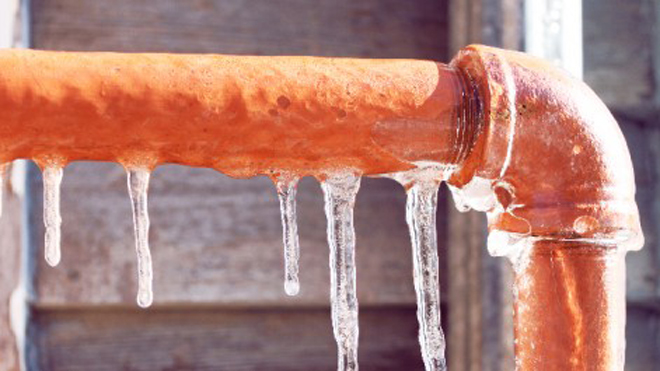Essential Tips to Avoid Frozen Plumbing in Winter
Essential Tips to Avoid Frozen Plumbing in Winter
Blog Article
What're your beliefs about 6 Ways to Prevent Frozen Pipes?

Winter can wreak havoc on your plumbing, particularly by freezing pipelines. Below's just how to prevent it from taking place and what to do if it does.
Introduction
As temperatures drop, the risk of icy pipelines rises, potentially bring about pricey repair work and water damage. Recognizing exactly how to stop icy pipelines is essential for home owners in cool climates.
Comprehending Frozen Pipes
What creates pipelines to freeze?
Pipelines freeze when revealed to temperature levels below 32 ° F (0 ° C) for expanded durations. As water inside the pipelines ices up, it expands, taxing the pipe walls and potentially triggering them to rupture.
Risks and problems
Frozen pipelines can result in water supply disturbances, residential or commercial property damages, and pricey fixings. Burst pipelines can flood homes and create comprehensive structural damages.
Signs of Frozen Pipeline
Determining icy pipelines early can prevent them from rupturing.
How to identify icy pipes
Search for lowered water flow from faucets, unusual odors or sounds from pipelines, and noticeable frost on exposed pipelines.
Prevention Tips
Insulating at risk pipes
Wrap pipes in insulation sleeves or make use of warm tape to protect them from freezing temperatures. Focus on pipelines in unheated or outside areas of the home.
Heating methods
Keep interior areas sufficiently heated, especially locations with plumbing. Open up closet doors to enable warm air to circulate around pipes under sinks.
Shielding Outside Pipes
Yard pipes and exterior faucets
Detach and drain pipes garden hoses before winter months. Install frost-proof spigots or cover exterior taps with protected caps.
What to Do If Your Pipelines Freeze
Immediate actions to take
If you suspect icy pipelines, keep taps open to soothe stress as the ice thaws. Utilize a hairdryer or towels soaked in hot water to thaw pipelines gradually.
Long-Term Solutions
Architectural adjustments
Consider rerouting pipes far from exterior wall surfaces or unheated areas. Include extra insulation to attic rooms, basements, and crawl spaces.
Upgrading insulation
Purchase top notch insulation for pipes, attic rooms, and wall surfaces. Correct insulation assists maintain constant temperatures and lowers the danger of frozen pipelines.
Final thought
Stopping frozen pipes calls for proactive steps and quick reactions. By recognizing the reasons, indicators, and safety nets, property owners can secure their pipes during cold weather.
5 Ways to Prevent Frozen Pipes
Drain Outdoor Faucets and Disconnect Hoses
First, close the shut-off valve that controls the flow of water in the pipe to your outdoor faucet. Then, head outside to disconnect and drain your hose and open the outdoor faucet to allow the water to completely drain out of the line. Turn off the faucet when done. Finally, head back to the shut-off valve and drain the remaining water inside the pipe into a bucket or container. Additionally, if you have a home irrigation system, you should consider hiring an expert to clear the system of water each year.
Insulate Pipes
One of the best and most cost-effective methods for preventing frozen water pipes is to wrap your pipes with insulation. This is especially important for areas in your home that aren’t exposed to heat, such as an attic. We suggest using foam sleeves, which can typically be found at your local hardware store.
Keep Heat Running at 65
Your pipes are located inside your walls, and the temperature there is much colder than the rest of the house. To prevent your pipes from freezing, The Insurance Information Institute suggests that you keep your home heated to at least 65 degrees, even when traveling. You may want to invest in smart devices that can keep an eye on the temperature in your home while you’re away.
Leave Water Dripping
Moving water — even a small trickle — can prevent ice from forming inside your pipes. When freezing temps are imminent, start a drip of water from all faucets that serve exposed pipes. Leaving a few faucets running will also help relieve pressure inside the pipes and help prevent a rupture if the water inside freezes.
Open Cupboard Doors
Warm your kitchen and bathroom pipes by opening cupboards and vanities. You should also leave your interior doors ajar to help warm air circulate evenly throughout your home.

I was made aware of that editorial on Preventing and dealing with frozen pipes through a buddy on our other website. You should take a moment to promote this content if you enjoyed it. I love your readership.
Source Report this page